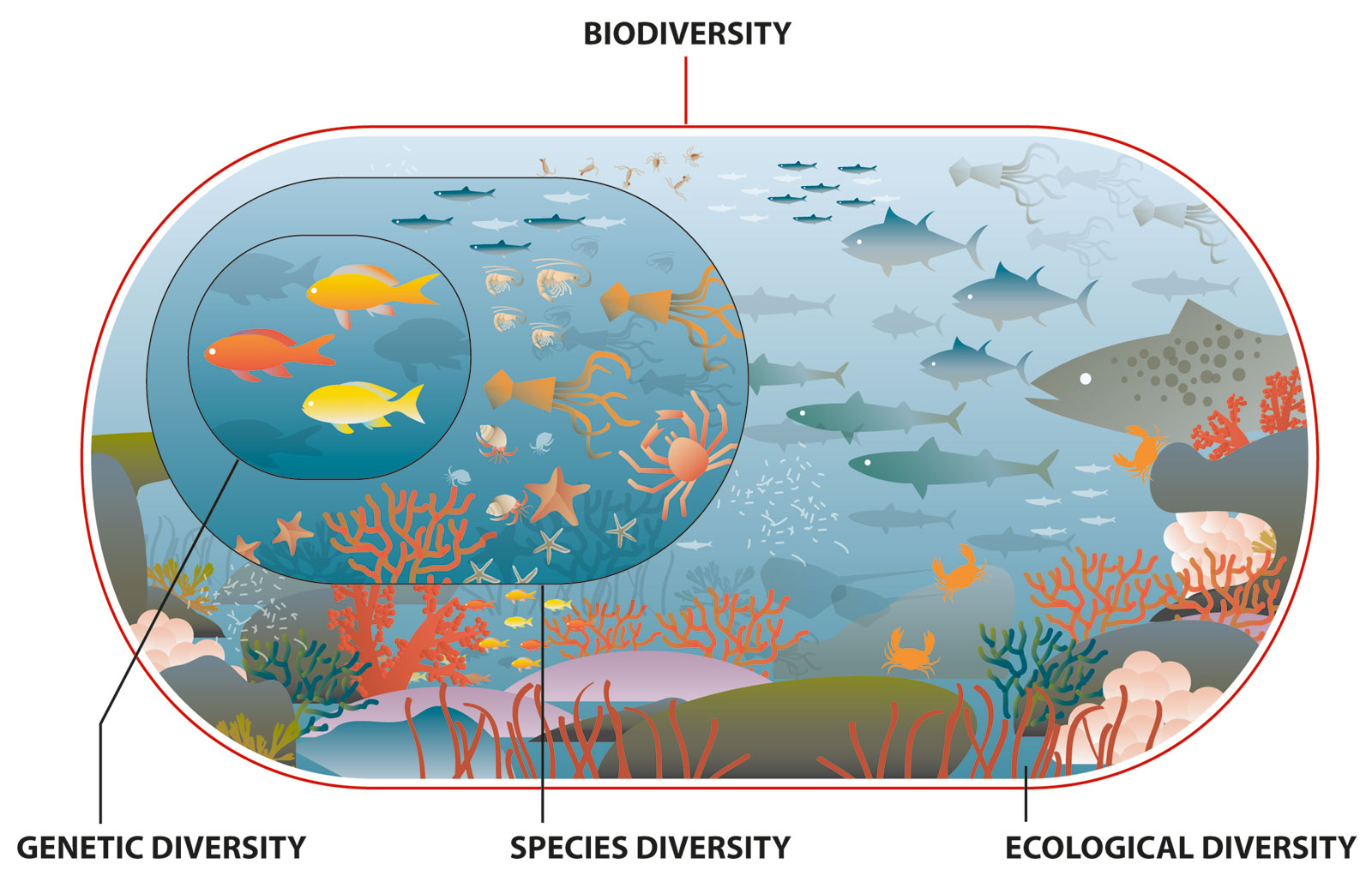
Chapter 9. Chapter 9: Biodiversity
What is biodiversity and why is it important?

Guiding Question 9.1
What is biodiversity, and why is it important?
Why You Should Care
Biodiversity refers collectively to the variation in genes among individuals of a species, the number of species in an area, and the variation of ecosystems within a region. Understanding the importance of biodiversity is a journey for most people. The first stop is the pharmacy; it is understandably easy to appreciate biodiversity as a potential source for cures to diseases. The next stop is understanding the need to protect ecosystem services. Maintaining biodiversity is like the party game where players have to remove wooden blocks out of a stack: You never know which block will cause the whole stack to tumble down when it is removed. It is similarly difficult to predict the effect of losing species to ecosystems. Alligators, the keystone species of the Everglades, at one time were hunted without legal limits and their numbers dwindled to the point of them being threatened. For a long time, people considered the situation to be the removal of a pest. We know now that allowing alligators to go extinct could have been disastrous because properly functioning ecosystems provide invaluable services like clean water to all organisms, including humans. The last stop on the journey is appreciating the intrinsic value of biodiversity. Many consider biodiversity a source of beauty and wonder and consider the permanent loss of genetic variation or species a tragedy.
Test Your Vocabulary
Choose the correct term for each of the following definitions:
| Term | Definition |
|---|---|
| Benefits that are important to all life, including humans, provided by functional ecosystems; includes such things as nutrient cycles, air and water purification, and ecosystem goods, such as food and fuel. | |
| The variety of life on Earth; it includes species, genetic, and ecological diversity. | |
| An object’s or species’ worth, based on its mere existence; it has an inherent right to exist. | |
| The heritable variation among individuals of a single population or within the species as a whole. | |
| The variety of species, including how many are present (richness) and their abundance relative to each other (evenness). | |
| An object’s or species’ worth, based on its usefulness to humans. | |
| The variety within an ecosystem’s structure, including many communities, habitats, niches, and trophic levels. |

1.
Species diversity has two components (pick two):
Species evenness
Species variation
Species richness
Species deviations
Species niches
2.
Identify whether the following scenarios depict genetic, species, or ecosystem diversity:
A)The Great Smoky Mountains National Park is known by amphibian enthusiasts as the salamander capitol of the world. Around 5% of all salamander species in the world can be found in an area about half the size of Rhode Island, including 3 to 5 endemic species that are found nowhere else.
B) Although only one or perhaps two kinds of mangoes are sold in U.S. supermarkets, there are hundreds of named and registered cultivated varieties of mango trees.
C) The Olympic Peninsula in Washington State contains rocky coastline, temperate rainforests, temperate dry forests, high alpine meadows and forests, and a glacier.
A) This describes a number of different species of salamander in an area, so it is referring to species diversity.
B) This refers to the diversity of types of one species, in other words, genetic diversity within mangoes.
C) This is a description of different kinds of ecosystems in an area.
A) This describes a number of different species of salamander in an area, so it is referring to species diversity.
B) This refers to the diversity of types of one species, in other words, genetic diversity within mangoes.
C) This is a description of different kinds of ecosystems in an area.
3.
It is TRUE to say that naturally derived medicines:
| A. |
| B. |
| C. |
| D. |
4.
Most of the medicines derived by plants are used by those plants to:
| A. |
| B. |
| C. |
| D. |
5.
But wait, there's more! There are many more medicines with natural origins. Use your Internet-searching skills to match the following medicines to their sources:
A) Aspirin (a non-steroidal anti-inflamatory and pain drug)
B) Artemisinin (antimalarial)
C) Botox (antispasmodic, cosmetic muscle relaxant)
D) Inulin (used to test kidney function and in rehydration treatment following diarrhea)
E) Atropine (pupil dilater, restores low heart rate to normal)
F) Curcumin (non-steroidal anti-inflammatory/pain; in trials as antitumor agent)
G) Can you find more drugs derived from organisms?
G) Answers will vary.
G) Answers will vary.
6.
Thought Question: If the examples of naturally derived medicines are representative of these medicines as a whole, what are the three most important sources in terms of kingdoms?
Activity results are being submitted...